|
Comet Leonard is coming to our solar system and will make its splah in our skies in December, 2021. Its retrograde orbit is bringing it in on a hyperbolic trajectory. Its velocity is 43 miles/second. That's faster than last year's Comet NEOWISE. The comet will come closest to Earth Dec 12, 2021, at a distance of 21 million miles. It will pass by Venus Dec. 18, 2021 at a distance of 2.6 million miles. Estimates are that it will have a visual magnitude of 5 or 4, which means get the binoculars. Sure, you'll be able to see it with the naked eye, but if you're in the city, it's going to be dim. It will also be close to the horizon, so make sure you've got a good viewing location with a low tree line. When the comet becomes visible, it'll be in the morning before dawn. It will be speeding along, so every day, it'll be in a different position. The charts on the right show where the comet will be. Thanks to Eddie Irizarry, for the information and the most of the illustrations which he used Stellarium to make. The solar system graphic is from NASA. Bottom line: Comet C/2021 A1 (Leonard) – discovered Jan. 3, 2021 – is currently between the orbits of Jupiter and Mars, heading inward. It’ll reach perihelion, its closest approach to the sun, around Jan. 3, 2022. We’ll have a whole year to watch this comet get brighter and brighter. It might become the brightest comet of 2021! Source: Eddie Irizarry of the Sociedad de Astronomía del Caribe (Astronomical Society of the Caribbean) has been a NASA Solar System Ambassador since 2004. He loves public outreach and has published multiple astronomy articles for EarthSky, as well as for newspapers in Puerto Rico. He has also offered dozens of conferences related to asteroids and comets at the Arecibo Observatory. Asteroid 33012EddieIrizarry, a 7.8 km space rock, has been named in his honor. |
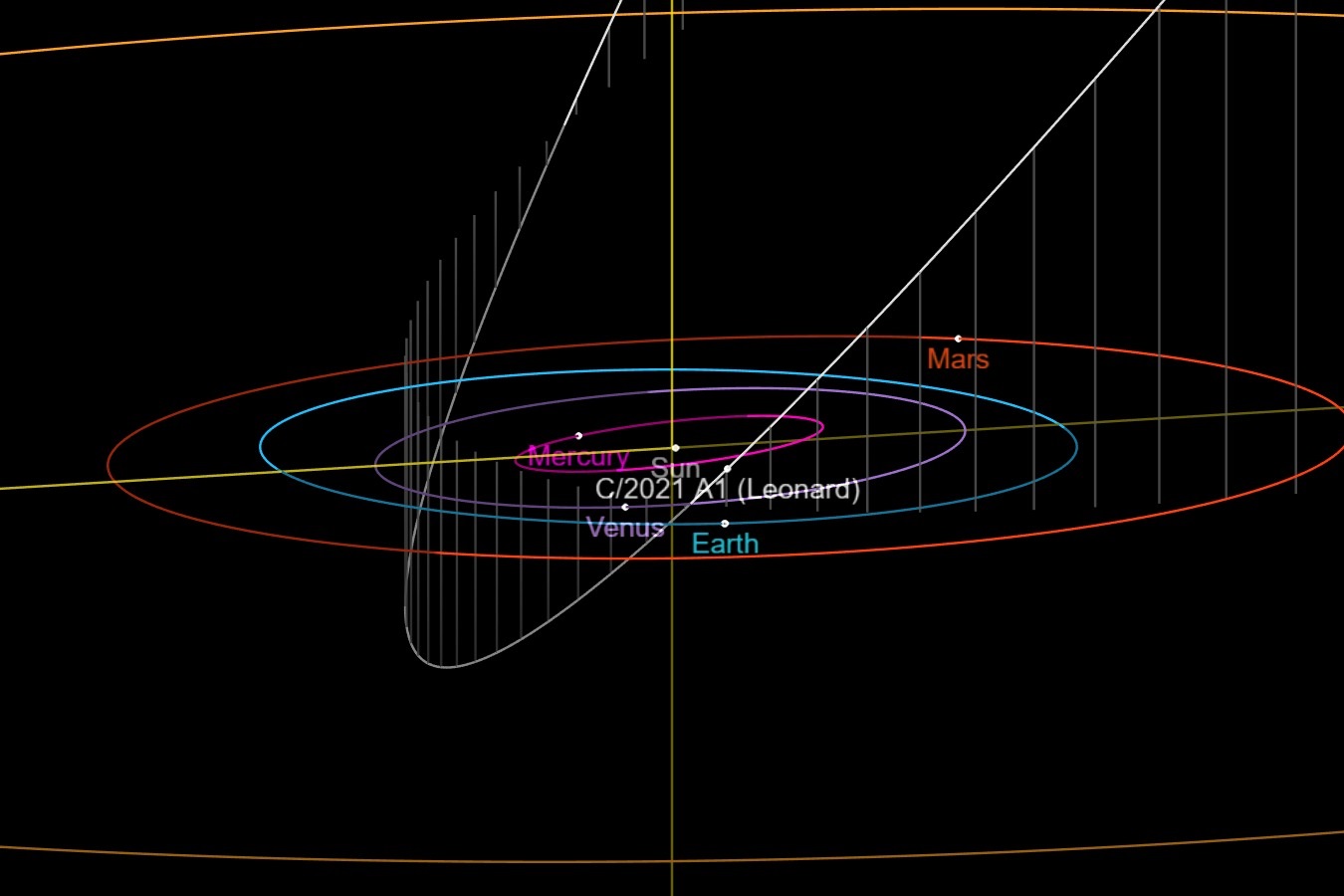 This perspective on Comet C/2021 A1 (Leonard) shows its trajectory through our solar system. North is up. You can see that its orbit will cause it to be initially visible from Earth’s Northern Hemisphere, and then from the Southern Hemisphere. Image via NASA/JPL. Morning Sky 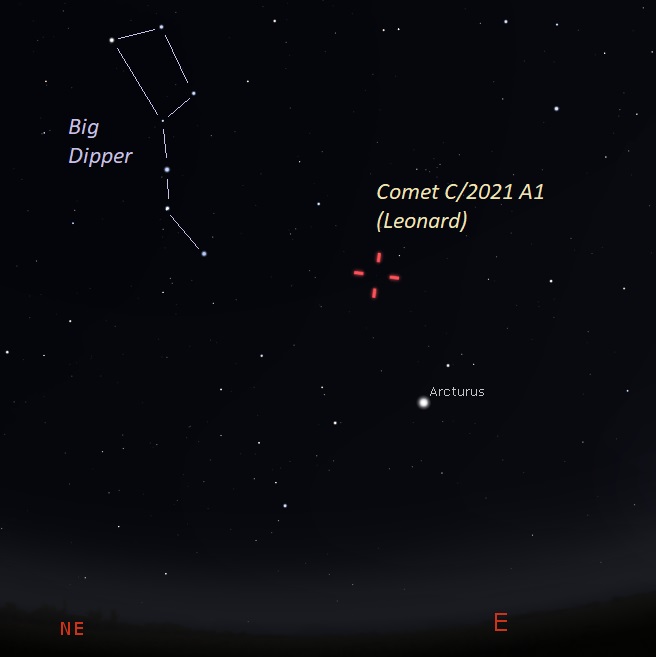 Location of Comet C/2021 A1 (Leonard) Dec. 1, 2021. Face east about 90 minutes before sunrise. The Big Dipper asterism in the constellation Ursa Major the Great Bear will provide a good reference for observers to locate the comet. Illustration by Eddie Irizarry using Stellarium. 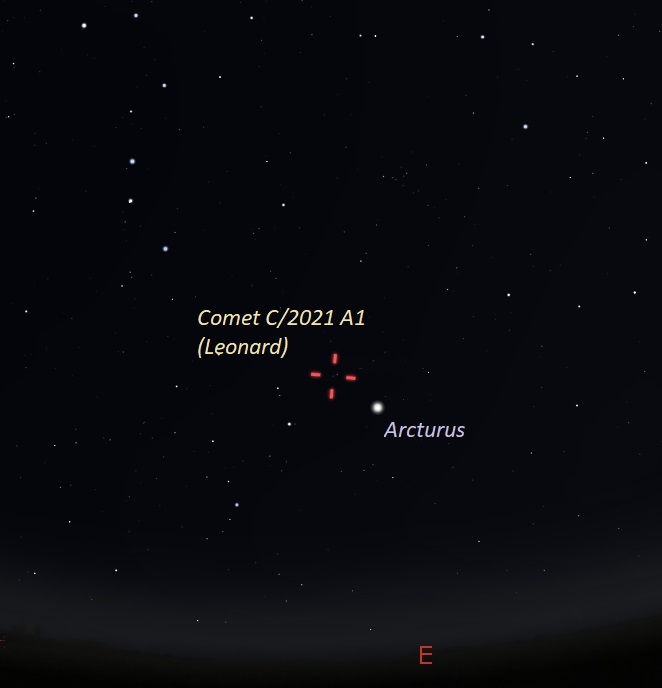 Comet C/2021 A1 is traveling so fast that its position in our skies will change daily during early December 2021. Face east Dec. 5, 2021, about 90 minutes before sunrise. Comet Leonard will be located very close to where we see bright star Arcturus, as seen here. Facing east, as seen from U.S. Illustration by Eddie Irizarry using Stellarium. 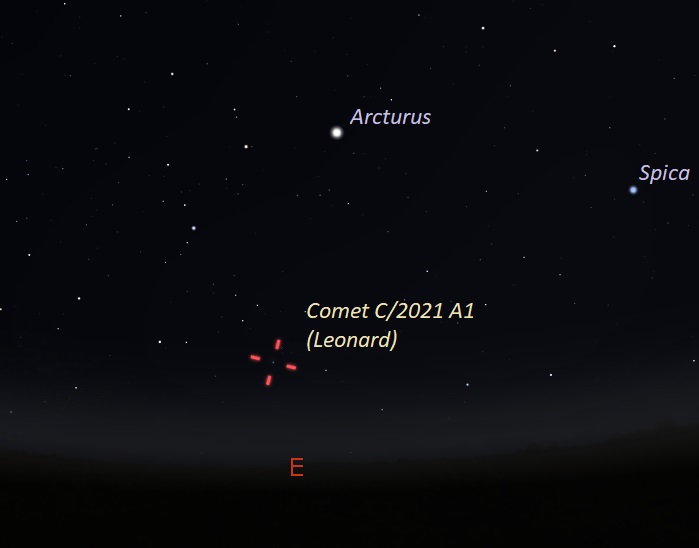 Location of Comet C/2021 A1 (Leonard) Dec. 10, 2021. By then, it will be brighter but closer to the horizon. Look 30 minutes before sunrise. Illustration by Eddie Irizarry, using Stellarium. Evening Sky Around Dec. 14-16, 2021, Comet C/2021 A1 (Leonard) will become visible just after sunset, very low in the southwest horizon. 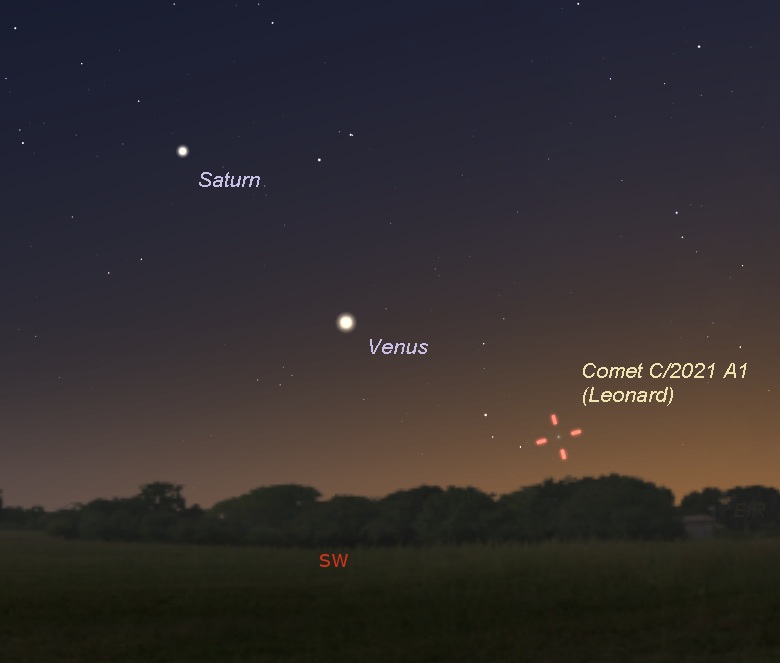 Location of Comet C/2021 A1 (Leonard) Dec. 15, 2021, about 30 minutes after sunset. Face Southwest. Illustration by Eddie Irizarry using Stellarium. 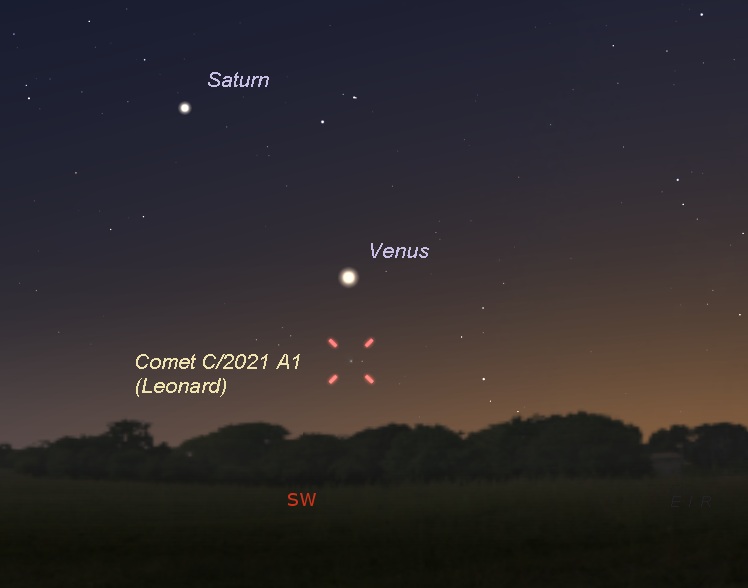 Location of Comet C/2021 A1 (Leonard) Dec. 15, 2021, about 30 minutes after sunset. Face Southwest. Illustration by Eddie Irizarry using Stellarium. 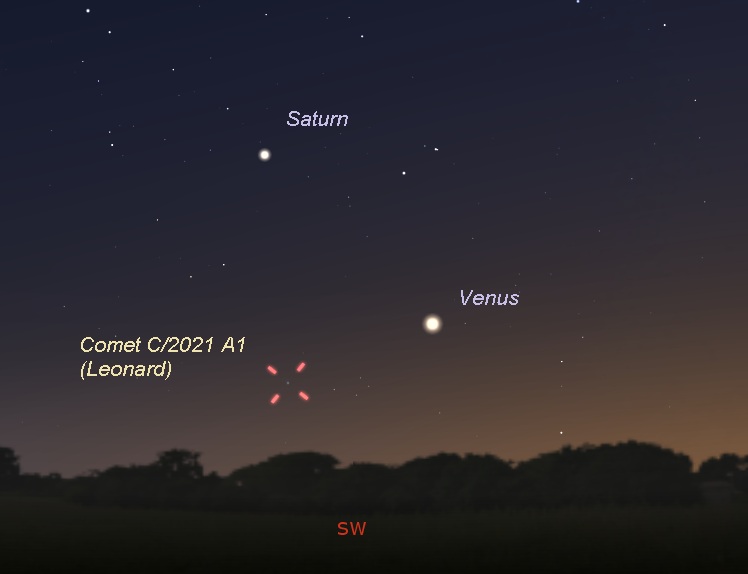 Location of Comet C/2021 A1 (Leonard) Dec. 19, 2021, about 30 minutes after sunset. Facing Southwest, as seen from U.S. Illustration by Eddie Irizarry using Stellarium. |